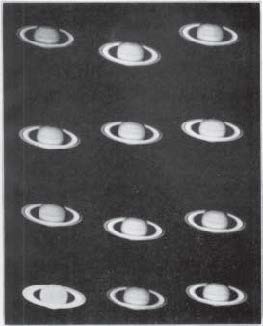
CHAPTER I
A GLIMPSE AT
THE SOLAR SYSTEM
AND THE STELLAR UNIVERSE
The heavenly bodies are divided into four distinct classes--planets, comets, meteors, and fixed stars.
Planets are dense, opaque bodies, globular in form, which shine by reflecting the light of the sun. They obey the law of gravitation, revolve around the sun in various periods of time, in elliptical paths not differing much from the circle, and are periodic in their revolutions. Their orbits extend east and west around the celestial sphere, are almost parallel with one another and the ecliptic, and are confined within the limits of the zodiac. Of this class of heavenly bodies there are believed to be more than one thousand.
Comets are light, luminous bodies, without permanent form, which shine by their own light intensified by that of the sun. They are divided into three classes distinguished from one another according as they revolve in elliptical paths, pursue parabolic curves, or move along hyperbolic curves. They obey the law of gravitation and revolve around the sun; and these that belong to the first order are periodic in their revolutions, while those that. belong to the second and third groups visit the sun once only, and then launch themselves into the profound depths of space seeking other suns which they in turn will, no doubt, abandon as they do our own. Comets are very swift in their flight, and take on long fiery trains as they approach their perihelion distances. Their orbits are not confined to the zodiac, like those of the planets, but extend through the heavens in almost every conceivable direction. Of this class of heavenly bodies there are, according to the most reliable living authorities, no less than seventeen million and five hundred thousand within the solar system.

Meteors are small, dense, luminous bodies and have a globular form and a sensible diameter. They frequently pass over a great extent of country and are seen for several seconds. Some leave behind them a train of glowing sparks, and others explode with reports like the discharge of artillery–the pieces either continuing along their course or falling to the earth as meteorites. Before these little wanderers of the sky come in contact with the earth and are converted into meteors by the resistance offered by the atmosphere, they are truly little worlds as hard and as dry as a cinder, which, like the earth, obey the law of gravitation, revolve around the sun in elliptical paths, and are periodic in their return. These little planets, whose diameters range from a magnitude of perhaps not more than one-half inch to that of several feet, and whose weights vary from a few ounces to several tons, are as numerous as the leaves on the trees or as the sands of the sea shore. According to the late Professor Newton the number of these miniature heavenly bodies that pierce the earth’s atmosphere and are converted into meteors daily is no less than four hundred million; yet their number does not seem to be diminishing in the smallest degree.

Plate 1. The Planet Saturn
Saturn is the only planet, so far as human knowledge extends, that is encircled by rings.
[Yerkes Observatory]
The fixed stars, like the comets, are self-luminous and by far the largest, brightest, and most distant from us of all the heavenly bodies. They obey the law of gravitation and move very rapidly through the heavens, but for the short space of human life they appear to be fixed in the concave of the sky. Between them and us there is a vast chasm which no imagination can bridge–a distance so immense that figures usually applied to it are meaningless. The number of this class of heavenly bodies is not reasonably limited.
The solar system, as a whole, is mainly comprised within the limits of the zodiac and consists of:
(1) The sun, which is classed with the fixed stars, and which is the center and controlling influence of the entire system.
(2) The major planets–Mercury, Venus, Earth, Mars, Jupiter, Saturn, Uranus, Neptune.
(3) The minor planets, of which about eight hundred are known to astronomical science.
(4) A class of secondary planets called moons or satellites which accompany most of the major primary planets on their annual journeys around the sun, and which, in the points of position and movement, bear the same relation to their respective centers of revolution that the primaries themselves bear to their own common center of revolution–the sun. The earth is one of the major planets, and the moon is its only satellite or secondary.
(5) The comets belonging to the first class, or those that move in elliptical paths and revisit the sun periodically.
(6) Meteors and shooting stars.
(7) The zodiacal light.

Plate 2. Halley’s Comet, May 29, 1910
The plate was exposed for two hours. The observer kept the telescope constantly pointed on the comet, following its course among the stars, which caused the elongation of the star images. The tail of the comet, as shown on the plate, was about seven million miles long and composed of luminous vapors chiefly hydrocarbons.